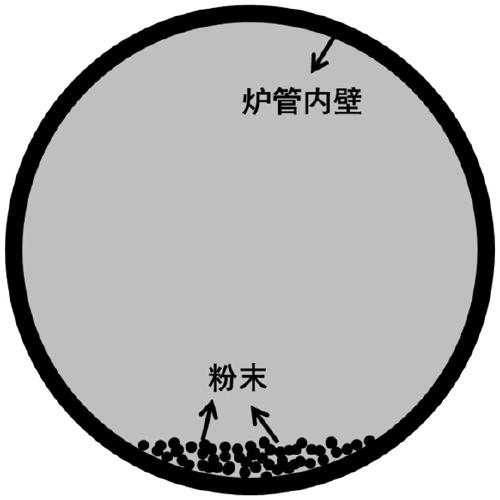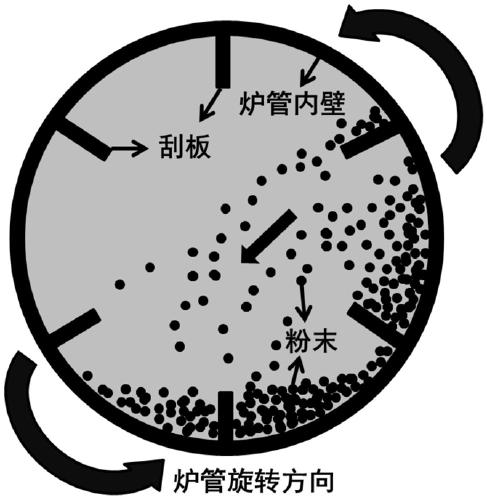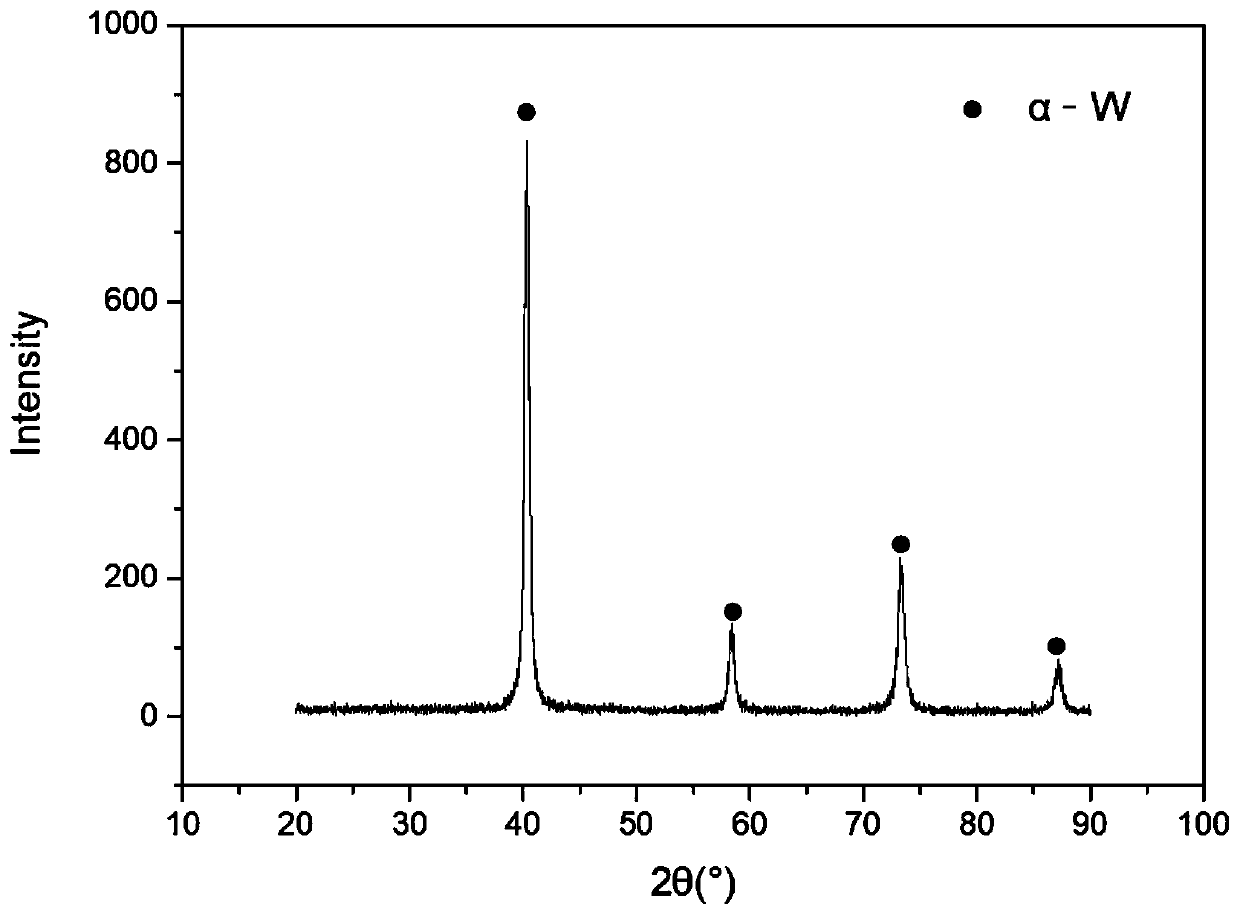Preparation method for rotary roasting and reduction of yttrium oxide doped tungsten composite powder
A technology of composite powder and yttrium oxide, which is applied in the field of rotary calcination and reduction preparation, can solve the problems of low calcination and reduction efficiency, unsuitable for mass production, low furnace body reduction efficiency, etc., and achieves resource saving, efficiency improvement and reduction. Efficiency improvement effect
- Summary
- Abstract
- Description
- Claims
- Application Information
AI Technical Summary
Problems solved by technology
Method used
Image
Examples
Embodiment 1
[0030] (1) Taking the single temperature zone rotary furnace BTF-1200C-R as an example, put 30g of precursor powder obtained by the freeze-drying method into a rotary furnace, and adjust the furnace tube speed to 5 rpm;
[0031] (2) Then the precursor powder was calcined at 450°C for 0.5h in an argon atmosphere;
[0032] (3) After two-step reduction in pure hydrogen (550°C, 1.5h; 750°C, 2h) and cooling to room temperature in a hydrogen atmosphere, the ultrafine nanometer W-1wt%Y was finally obtained 2 o 3 Composite powder, marked as A powder.
[0033] (4) For the convenience of comparison, 3g of freeze-dried precursor powder is placed in a rotary furnace, and the furnace tube speed is adjusted to 0 rpm (that is, static powder spreading). The subsequent steps are the same, marked as B powder; 30g of freeze-drying precursor powder is placed in a rotary furnace, and the furnace tube speed is adjusted to 0 rpm (that is, static powder spreading). The subsequent steps are the same...
Embodiment 2
[0035] (1) Taking the single temperature zone rotary furnace BTF-1200C-R as an example, put 20g of precursor powder obtained by the evaporation precipitation method into the rotary furnace, and adjust the furnace tube speed to 10 rpm;
[0036] (2) Then the precursor powder was calcined at 400°C for 2h in an argon atmosphere;
[0037] (3) After two-step reduction in pure hydrogen (550°C, 2h; 800°C, 1h) and cooling to room temperature in a hydrogen atmosphere, the ultrafine nanometer W-0.5wt%Y was finally obtained 2 o 3 Composite powder, marked as A powder.
[0038] (4) For the convenience of comparison, 2g of precursor powder by evaporative precipitation method is placed in a rotary furnace, and the furnace tube speed is adjusted to 0 rpm (that is, static powder spreading). The subsequent steps are the same, marked as B powder; at the same time, use 20g of evaporative precipitation precursor powder is placed in a rotary furnace, and the furnace tube speed is adjusted to 0 rpm...
Embodiment 3
[0040] (1) Taking the single temperature zone rotary furnace BTF-1200C-R as an example, put 20g of precursor powder obtained by the sol-gel method in the rotary furnace, and adjust the furnace tube speed to 3 rpm;
[0041] (2) Then the precursor powder was calcined at 500 °C for 1 h in air atmosphere;
[0042] (3) After two-step reduction in pure hydrogen (650°C, 1h; 700°C, 2h) and cooling to room temperature in a hydrogen atmosphere, the ultrafine nanometer W-1wt%Y was finally obtained 2 o 3 Composite powder, marked as A powder.
[0043] (4) For the convenience of comparison, 2g of sol-gel method precursor powder is placed in a rotary furnace, and the furnace tube speed is adjusted to 0 rpm (i.e. static powder spreading). The subsequent steps are the same and marked as B powder; 20g of sol-gel precursor powder is placed in a rotary furnace, and the furnace tube speed is adjusted to 0 rpm (that is, static powder spreading). The subsequent steps are the same, marked as C powder...
PUM
| Property | Measurement | Unit |
|---|---|---|
| particle size | aaaaa | aaaaa |
| particle size | aaaaa | aaaaa |
Abstract
Description
Claims
Application Information
 Login to View More
Login to View More - R&D
- Intellectual Property
- Life Sciences
- Materials
- Tech Scout
- Unparalleled Data Quality
- Higher Quality Content
- 60% Fewer Hallucinations
Browse by: Latest US Patents, China's latest patents, Technical Efficacy Thesaurus, Application Domain, Technology Topic, Popular Technical Reports.
© 2025 PatSnap. All rights reserved.Legal|Privacy policy|Modern Slavery Act Transparency Statement|Sitemap|About US| Contact US: help@patsnap.com



